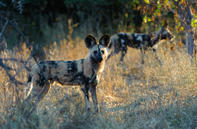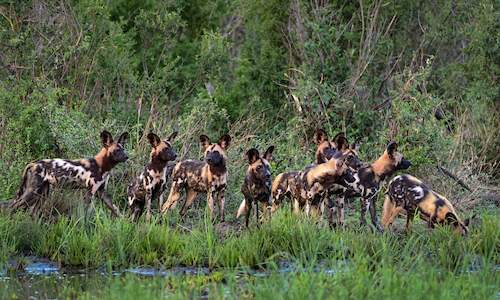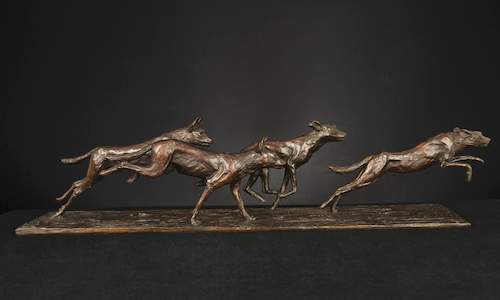
Name
Wild Dog (Lycaon pictus)Introduction
The South African Wild dog population has seen a significant decrease in numbers over the years and is now considered one of Africa’s most endangered species. The main factor contributing to the decline in their number is the loss of habitat and human persecution, even in protected conservation areas.
Other major factors include disease from contact with domestic dog breeds, specifically distemper. The low life expectancy of only 6 years in the Kruger National Park is thought to be attributed to possible genetic inbreeding, due to the limited populations and territories available.
Appearance
The wild dog is characterised by its blotchy yellow, white and black coat. Each coat blotches form a unique pattern for each individual, making it possible to identify every single wild dog from another. The wild dog measures 750mm at the shoulders, with males being slightly larger than females and weigh 20-30 kg as adults.Wild Dog Diet
The wild dog is a carnivore and preys on small to medium sized animals. The impala is a favourite prey for the wild dog in South Africa. They are known to hunt much larger prey, such as wildebeest and zebra in East Africa. They very rarely prey upon livestock. Wild dogs hunt in packs and they will strategically chase down their prey until it is exhausted. Once caught the pack will tear their prey apart and devour it immediately.Wild Dog Breeding
The wild dog is a seasonal breeder and produces litters during the mid-winter in South Africa. After a gestation period of 70 days, a litter of up to 12 pups or more are born. The young are not able to suckle for long and are weaned from 3 weeks old, they are then fed regurgitated meat from the pack members. Newborns are kept in protected burrows. There is only one breeding pair in the pack, while the other adults become helpers.Wild Dog Behaviour
Wild dogs are extremely gregarious animals, with pack sizes varying in numbers. A pack can consist of up to 50 individuals, and they form very close bonds with one another. The wild dog is one of the most efficient hunters in South Africa, as they hunt down prey in an organised team. As a result, the hunt is swift and the prey goes down in seconds and it is quickly consumed by the pack.Habitat
The African wild dogs can be found in habitats containing dense bush and wide open plains around South Africa.Best Place to See Wild Dogs?
The Wild dog is nomadic in nature and once roamed across sub-Saharan Africa. Today, populations of wild dog can only be found in East and Southern Africa in limited territories where there are no human populations. In South Africa, they can be found in Madikwe Game Reserve, Kruger National Park and around Phalaborwa Gate, Tshokwane and Skukuza and south of Afsaal; and on the odd game farm.
 Madikwe Game Reserve in the North West Province of South Africa, is utterly beautiful with Big 5 wildlife and endangered African Wild Dog. M...
Madikwe Game Reserve in the North West Province of South Africa, is utterly beautiful with Big 5 wildlife and endangered African Wild Dog. M... Working together for the good of the group, these Wild dogs are cast in bronze to immortalise the essence of pack mentality....
Working together for the good of the group, these Wild dogs are cast in bronze to immortalise the essence of pack mentality....